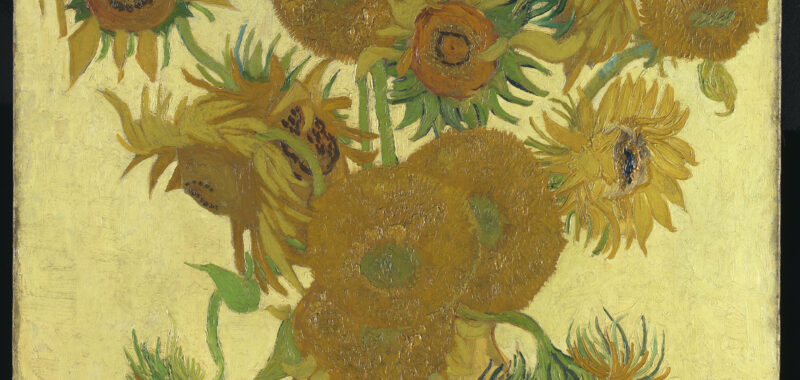LONDON — The National Gallery has pulled out all the stops for its tent-pole exhibition Van Gogh: Poets & Lovers. The show, part of the exhibitions and events comprising the museum’s 200th anniversary celebration, includes 61 paintings, many loaned from worldwide institutions and private collections. UK critics are unanimously awarding it five-star reviews, recognizing it as the “once in a century” event that its tagline promises.
It is also the punchiest ticket price for a London exhibition in this writer’s memory, at ~£28 (~$37) for adults. This is unsurprising, given its marketing as an unmissable blockbuster, and the sheer volume of masterpieces on view; the political maneuvering, insurance requirements, and other practicalities to secure them must have been herculean. (The show is supported by the Government Indemnity Scheme.)

The choice to mount a show on the vastly popular Van Gogh, using its star attraction, the 1888 “Sunflowers,” as the centerpiece, indicates it is going for the populist crowd; as such, Hyperallergic suggested I take a non-arty guinea pig to see how the popular slant resonated with a general audience. His first question got to the heart of the matter: Why do galleries put on special shows? Well, they can present new academic findings or technical discoveries, or examine artists and movements from novel and unusual perspectives. Not strictly so here. Poets and Lovers covers Van Gogh’s extraordinary output between 1888 and 1890, the final years of his life, spent in Arles, France. The title’s theme, however, seems arbitrary; early captions pay lip service to the idea, pointing out occasional “lovers” or “poets” who occupy the magnificent paintings, but this diminishes fairly quickly. Indeed, Guinea Pig said he would never have guessed the theme without the title.
Similarly, rooms titled the Garden: Poetic Interpretations, the Yellow House, An Artist’s Home, and Decoration are loose guidelines. In many cases, the portraits, flower studies, and vistas on display could be shown in any room. A passing visitor noted: “It’s all over the shop.”


This is a rare instance in which these curatorial shortfalls do not matter. The show’s primary purpose is to cement the National’s mighty place in the international art scene by securing major loans, establishing the importance of its “Sunflowers” painting, and generating visitor numbers — indeed, the exhibition was and surely will be packed for its duration. Nevertheless, it boasts some curatorial firsts: It presents its 1888 “Sunflowers” together with those of 1889 loaned from the Philadelphia Museum of Art and with “La Berceuse (The Lullaby)” (1889), a portrait of Augustine Roulin from the Museum of Fine Arts, Boston, as Van Gogh intended them to be hung. The pamphlet reproduces Van Gogh’s sketch of the proposed arrangement in an 1889 letter to his brother, Theo. Take a good look, as this is likely your only chance.
Visitors should take enormous pleasure in viewing such an explosion of experimental color and composition, and the expressive, urgent feeling that suffuses the vibrant brushwork. Guinea Pig often judged the paintings according to what he’d have on his wall, and perhaps this is a common point of judgement for the populist punter. Van Gogh’s work is endlessly reproducible and visually appealing (case in point: the extensive collection of sunflower-printed teddy bears in the gift shop). From hardened and cynical art critics to the visiting tourist, the show is worth seeing multiple times. Happy Birthday, National Gallery.

Van Gogh: Poets & Lovers continues at the National Gallery (Trafalgar Square, London, England) through January 19, 2025. The exhibition was curated by Cornelia Homburg and Christopher Riopelle.

